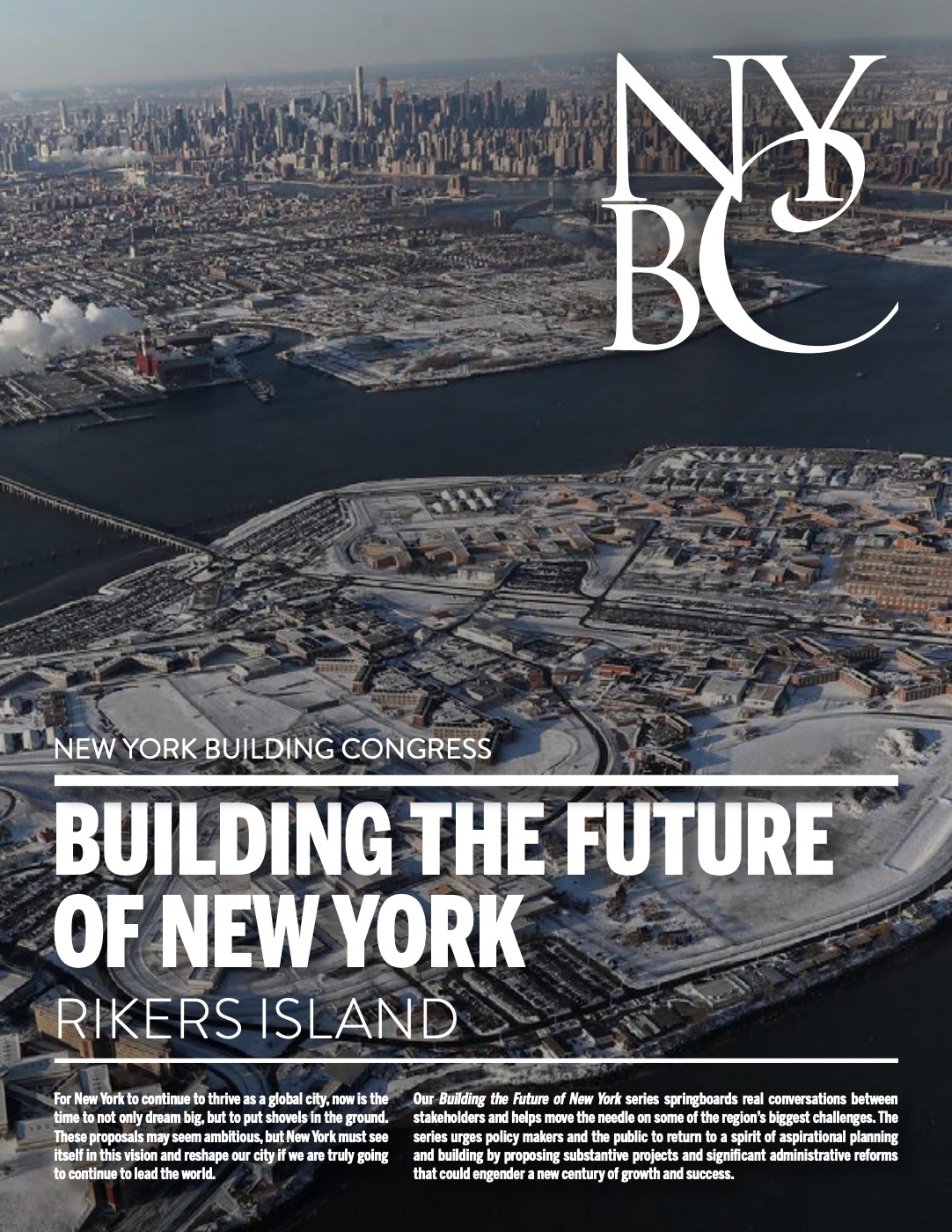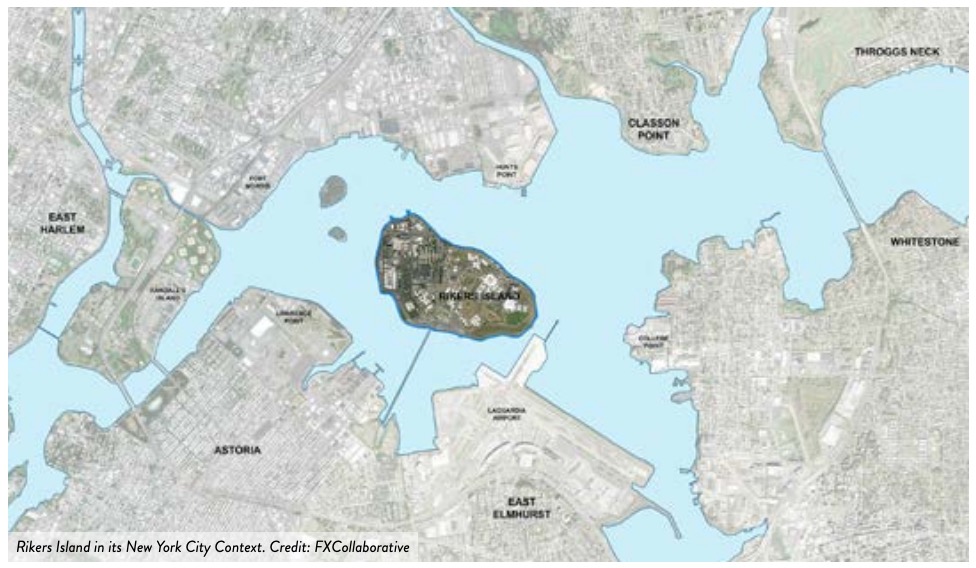NEW YORK BUILDING CONGRESS
 For New York to continue to thrive as a global city, now is the time to not only dream big, but to put shovels in the ground. These proposals may seem ambitious, but New York must see itself in this vision and reshape our city if we are truly going to continue to lead the world.
For New York to continue to thrive as a global city, now is the time to not only dream big, but to put shovels in the ground. These proposals may seem ambitious, but New York must see itself in this vision and reshape our city if we are truly going to continue to lead the world.
Our Building the Future of New York series springboards real conversations between stakeholders and helps move the needle on some of the region’s biggest challenges. The series urges policy makers and the public to return to a spirit of aspirational planning and building by proposing substantive projects and significant administrative reforms that could engender a new century of growth and success.
The Future of Rikers
Closing Rikers Island is a necessary step to reform New York City’s criminal justice system and an opportunity to meet the built environment needs of New Yorkers.
Criminal Justice Reform
For far too long, Rikers Island’s jail facilities have proven to be inadequate and detrimental to the physical, mental and emotional well-being of incarcerated individuals and corrections officers. The routine mistreatment of people held at Rikers and the decaying structures that house these individuals have been well documented. The island is isolated from the rest of the city, which is taxing on inmates, their loved ones, lawyers, social workers and guards. Moreover, Black and Latino New Yorkers are substantially overrepresented in the jail system, and high incarceration rates have an outsized impact on the social fabric of communities of color.
In 2017, the Independent Commission on New York City Criminal Justice and Incarceration Reform, chaired by former Chief Judge of the State of New York Jonathan Lippman, produced A More Just New York City, which called for a more effective and humane criminal justice system. The report outlined a plan to reduce the current jail population, close the jail facilities on Rikers Island and relocate the remaining jail population to modern, community-based facilities. That same year, the City committed to closing the jails on Rikers Island and creating a network of modern and humane borough-based jails.
In 2019, the City Council approved the plans to close Rikers by 2026, and work to build four borough-based facilities has begun, starting with one in Manhattan.
Criminal Justice Reform
Rikers Island offers a large-scale opportunity to meet the current needs of New Yorkers but comes with unique restrictions and complications. The site is over 400 acres, making it more than twice the size of Governors Island, and lies largely outside the floodplain. It also has a utility network that could be integrated into existing sewer, waste and power systems. In a land-constrained city like New York, Rikers Island can safely support a variety of activities, including those that require large plots of land and are sensitive to environmental disruptions.
However, the island’s historic and current uses mean the site is over 70 percent landfill and is only accessible by the Buono Bridge and a single bus route. This means any redevelopment may involve investment in remediation, foundational engineering and transportation infrastructure. Rikers’ proximity to LaGuardia Airport also imposes maximum height limits of roughly 15 stories and results in elevated noise levels.
Planning for a New Island
Currently, the City has no concrete plans for what will become of Rikers Island once the jail facilities are removed. According to Judge Lippman, “It is also time to look ahead to how our city can repurpose this island, which has been a symbol and accelerator of misery for so many, and turn it to the use for public good.”
The planning process for redeveloping the island must begin now. There are many paths to achieving a Rikers Island that enhances New York’s environmental, economic and social future. Specific land uses should be determined through an inclusive planning process and with consideration for longterm, regional needs.
Concepts in the following pages are not exclusive of one another and should progress the conversation around redevelopment.
When planning for the future, the City should consider an array of reuse alternatives to advance equity and sustainability goals:
INFRASTRUCTURE
Energy: A solar field, solar panels on the roofs of other structures and a battery storage facility would help New York transition toward renewable energy and achieve carbon neutrality by 2050. Additionally, battery storage could reduce or eliminate the need for some of the city’s peaker plants, which are only used when electricity demand is higher than what baseload power plants can supply. Peaker plants emit more greenhouse gases than regular power plants and are largely sited in communities of colors and low-income neighborhoods.
Water: A consolidated Rikers Island wastewater treatment plant would be more energy and space efficient than older facilities currently in use. A state-of-the-art facility would offer a range of social, economic and environmental benefits including enhanced water quality, reduction in odor and, in combination with a biosolids energy recovery plant, an energy neutral or positive plant. With a new consolidated plant, the City could close four existing plants along the upper East River and use the new space for housing, parks and other development. In addition, a new marine transfer station might be built so waste for composting and energy generation is transported to the island by barge rather than trucks.
Waste: A modern composting site and waste-to-energy facility would help the City achieve its commitment to zero waste by 2030. There is already a small composting facility on the island that has the potential to be expanded and upgraded to process as much as 1,000 tons of organic waste daily. This would divert some of the 1.2 million annual tons of food scraps and yard waste currently sent to landfills. The compost might then be used for a commercial urban farm. In addition, a waste-to-energy facility could convert waste that cannot be recycled.
EMPLOYMENT
Manufacturing: Compatible with building height restrictions and elevated noise levels, an industrial and manufacturing hub on Rikers Island could create middle-class jobs and provide affordable space for New York’s maker community. Such a development would enable the City to meet its goal of adding 20,000 industrial and manufacturing jobs by 2027. A Rikers Island industrial hub would also help meet the demand for affordable industrial space in western Queens. It has the potential to be even larger than the 300-acre Brooklyn Navy Yard, which employs over 10,000 people and has the highest average asking lease rate for industrial space in the city.
Research: A Rikers Island green industry campus would advance New York City as a global leader in sustainability. Similar to Cornell Tech on Roosevelt Island or the proposal for a climate center on Governors Island, this campus would include an anchor university or research institution, offices for green industry companies and convening spaces for public programs. If environmental infrastructure is built on the island, Rikers could become a living lab for testing innovative strategies in waste reduction, water management and renewable energy.
Employment Training: Accompanying green industries and manufacturing, on-site job training and certification programs could prepare New Yorkers for careers in these industries and promote inclusive economic growth. To address the historic harm Rikers has placed on communities of color, redevelopment should provide employment opportunities for formerly incarcerated individuals and contracting opportunities for minority-owned businesses.
RESIDENTIAL AND MIXED USE
Housing: A combination of single-family and multi-family units on the island would increase the overall housing supply and help the City achieve its goal of adding 300,000 affordable units by 2026. According to a 2016 proposal, the grid system could be extended to Rikers Island, creating 80 blocks of homes, businesses and schools for 65,000 residents. Constructing a residential community would involve some environmental challenges because of the island’s noise levels, deep bedrock and methane deposits.
Institutional and Commercial: Alongside housing, a mixed-use development could include social infrastructure like K-12 academic, healthcare and cultural institutions and commercial spaces like retail, offices and restaurants. This variety of uses creates jobs and with improved transportation infrastructure, ensures Rikers is a vibrant neighborhood.
TRANSPORTATION
Private: Pedestrian and bicycle infrastructure added to the Buono Bridge would help increase access to Rikers Island. The three existing car lanes might be reconfigured to include a pedestrian pathway and dedicated bike lane. These new links would improve travel to and from Rikers and would be integrated into the island and the city’s greenway networks. Moreover, a multimodal bridge could be built between Rikers Island and Port Morris or Hunts Points to ensure the Bronx is similarly connected.
Public: A series of transit investments would drastically increase access to the island, which is only served by the Q100 bus line. As a first step, the Metropolitan Transportation Authority would redesign bus routes running through northern Queens to include stops on Rikers Island. If a new bridge to the Bronx is built, a new bus route could connect western Queens, Rikers Island and the South Bronx. The New York City Economic Development Corporation has the ability to add a Rikers Island ferry terminal as part of the existing Soundview line, which connects the eastside of Manhattan to the Bronx. Additional projects would potentially include extending the N line through Astoria or making Rikers the northern terminus of the proposed Brooklyn-Queens Connector.
Download full version (buildingcongress.com): Building the Future of New York – Riker’s Island
About New York Building Congress
www.buildingcongress.com
The New York Building Congress provides a unique forum to advance an industry-wide agenda focusing on economic and infrastructure investment, job creation and professional exchange. These goals require the dedicated involvement and cooperation of the contractors, architects, engineers, unions, real estate managers, developers and owners who comprise the building community.
Tags: New York, New York City, NYC, Riker's Island







 RSS Feed
RSS Feed